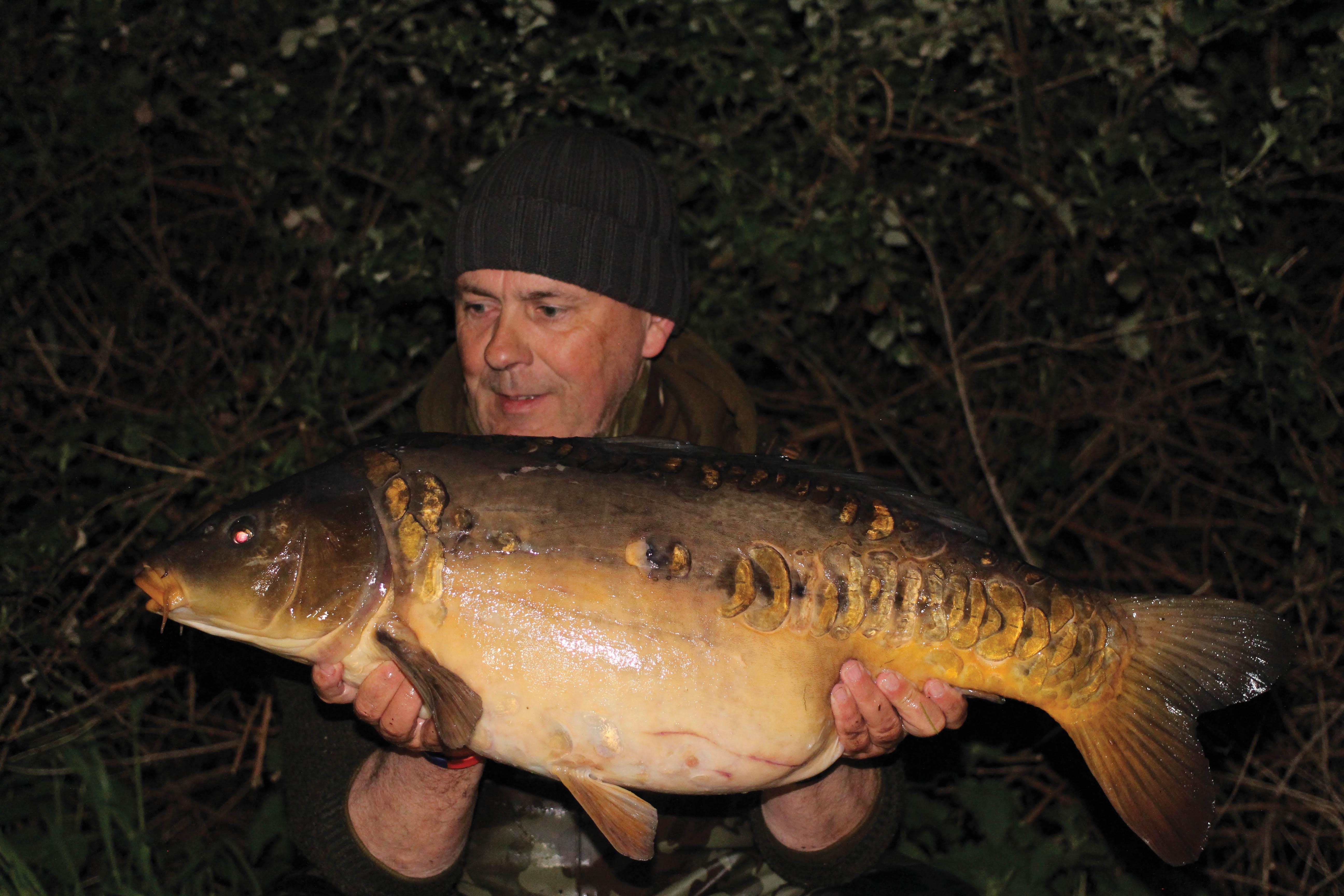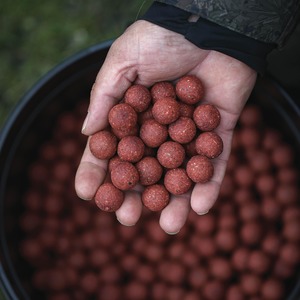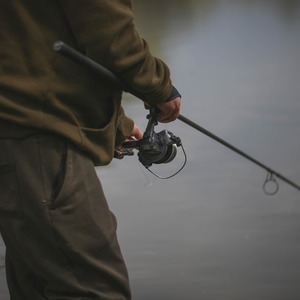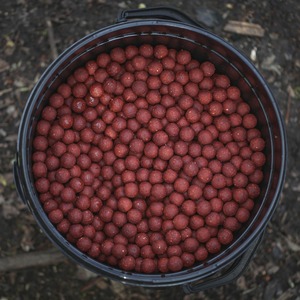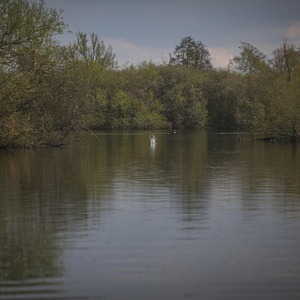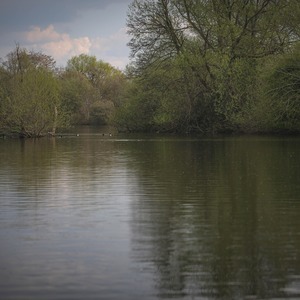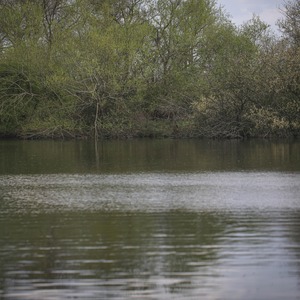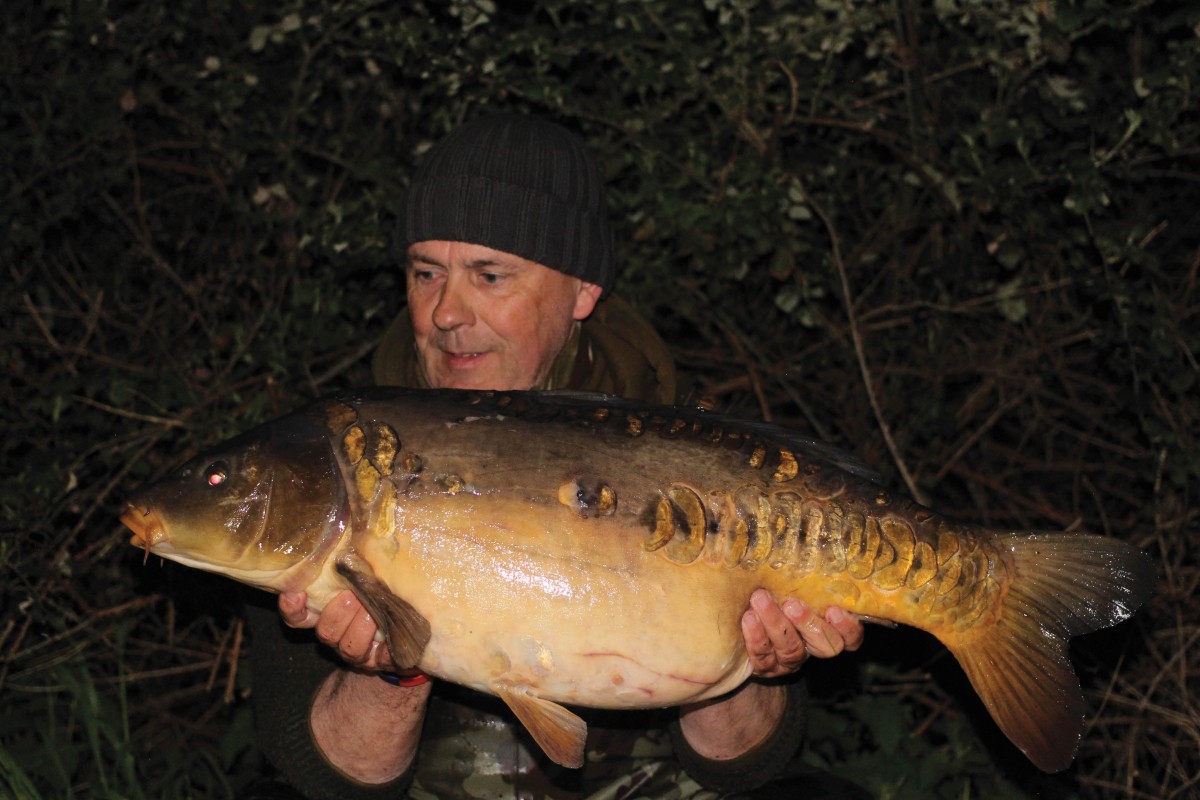
Tracking Down A 50lb UK Common - Part 2
Whilst Nigel Sharp has been walking his target water—Farnham Flint—almost every other day since Christmas, just watching, listing and observing, this is the first time CARPology has joined him on its banks. Let’s find out how the session went…
You’ve mentioned Solubles, but what else might you put out?
“Just normal boilies, the Krilla ones which I’ve been using and which I intend to use through the year. The way I look at it, every session’s an opportunity to pre-bait, even if I blank. I also have some corn and some pellet, and a few tiger nuts, but I think I’ll hang fire with them.”
How long are you down for?
“At least two nights, probably, and then we’ll see. If it’s looking good and I’m catching fish, I’ll do another night. I wouldn’t think, though, that I’ll be here longer than three or four nights.”
You’re here to catch your target fish, the Pristine Common. When will you start to formulate a plan to fish particular areas you think that fish might get caught from? Are you, at the moment, fishing areas where you expect the carp to be in numbers, rather than where the big ‘un has been caught from?
“Everything depends on angling pressure. I’d love to say that I know the swim from which it’ll be caught, and that I’m going to fish it and work it, but realistically, on this lake, that’s not going to happen. I’ll keep an open mind and gauge the pressure over the next month or two. The new ticket starts in June, so we’ll then have new anglers on here who are all fresh and keen. Many on here at the moment will be quite respectful and will leave you alone, but you wouldn’t want to work an area only to find that, come June, you can’t get back in there for a month. You really do have to play it by ear, every time you come down here, and every day is different.”
Back to today’s session, you’ve now settled on your three spots. How did they feel and what were they like in terms of depth?
“Judging by the speed the lead dropped, I’d say they’re all around four feet. There was enough depth for me to feel the lead down, and they were all quite hard. I could feel the gravel as I pulled the lead back and all seem pretty clear. I didn’t come up against any weed as I pulled back, so I’m going with Hinge Rigs.
“On the left-hand spot there is a little bit of silkweed. I have the feeling that it’s quite low-lying, though. We’ll still go with a Hinge Rig, but I’ll move the stop up a little. The right-hand rod’s up against the island and I’m fishing the nearside slope. They all feel clean and I’m happy that I’ll be presenting.”
You’re using artificial hookbaits, why is that?
“There are crayfish in here, and they seem to favour the hard, gravelled areas. I don’t always use them on here, but as I say, the crays do seem to like the gravel spots. It’s just so that I’ll know, come tomorrow morning, that I still have a hookbait out there, if the crayfish happen to get on me. There’s nothing worse than waking up, not having had a bite and then finding you’ve no hookbait.”
You like to make your artificial hookbaits more buoyant. How do you go about doing that?
“I use a cordless drill, and I heat up a 7mm drill bit over the flame of my burner. I then hold it against the rubber hookbait and let it burn through. It goes through easier having been heated up. You get a nice, smooth hole, and in that I’ll fit an 8mm foam or cork plug. I use fairly large hooks, and the baits, in their original form, aren’t quite buoyant enough.”
You have your Hinge Stiff links from your previous session on, and you used the term ‘pretty them up’. What exactly do you do to them to prepare them for casting out?
“With them having been on the rods, they will have pulled straight, so I curve the hooking section over and make sure there are no kinks in the boom sections. I ensure the ‘D’ sections are okay, and most importantly, I check the hook points. I’m not one for putting on a fresh hook every session, but I will check the points. If the hooks remain sharp, they go back out there. I put new hooks on only when I need to.”
You didn’t steam your booms, though. Do you at all?
“I will if I need to, but they tend to remain straight. If they become curved, I just rub my fingers up and down them. The heat from your fingertips will tend to straighten them.”
Once you’d wrapped your rods up and were ready, you left your rigs in the water for five or ten minutes. What’s the idea behind doing that?
“That’s just to get the air out of the leadcore. It’s just so they soak up a bit of water, and so they won’t look like a steel rod when they’re laying on the bottom.”
And as yet, you’ve not put any bait out. Do you think you will do this evening?
“If the swans aren’t around, I’ll try and get a couple of Spombs’ worth over each rod. With the water being just four feet deep, swans will be able to reach any bait I put out, or at least they’ll be able to paddle their legs and wash it up from the bottom. If the swans aren’t around, I’ll put some out just to get some smell in the water, but I won’t go too mad.”
You’re also using bait screws. When did you switch from floss?
“I often fish quite short sessions, and I will look for opportunities. With floss, you have to use a lighter and a pair of scissors, and if it’s windy, it can make things difficult. Baits screws are quick and easy to use. Sorting a rod and adding a hookbait via a bait screw is so much quicker and easier than trying to tie it on with a dental floss loop, especially when you’re looking to put a bait on a showing fish. You don’t have to muck about melting the floss whilst also trying not to burn through the ‘D’ and what have you. It’s a quick method, and the bait stays on.”
Were you a bit dubious about using them, though?
“Yes, 100 per cent, but that’s the same with everything. There’s more chance of a bait pinging off a floss loop than a bait screw.”
THE SECOND HALF OF THE SESSION
Having left you to it, did you introduce any bait, and if so, what, and over which rods?
“I gave it a couple of hours before I then put out half a dozen medium-sized Spombs. I fed a fifty-fifty mix of whole and crushed 15mm Krilla boilies, with a little bit of sweetcorn, over each rod.”
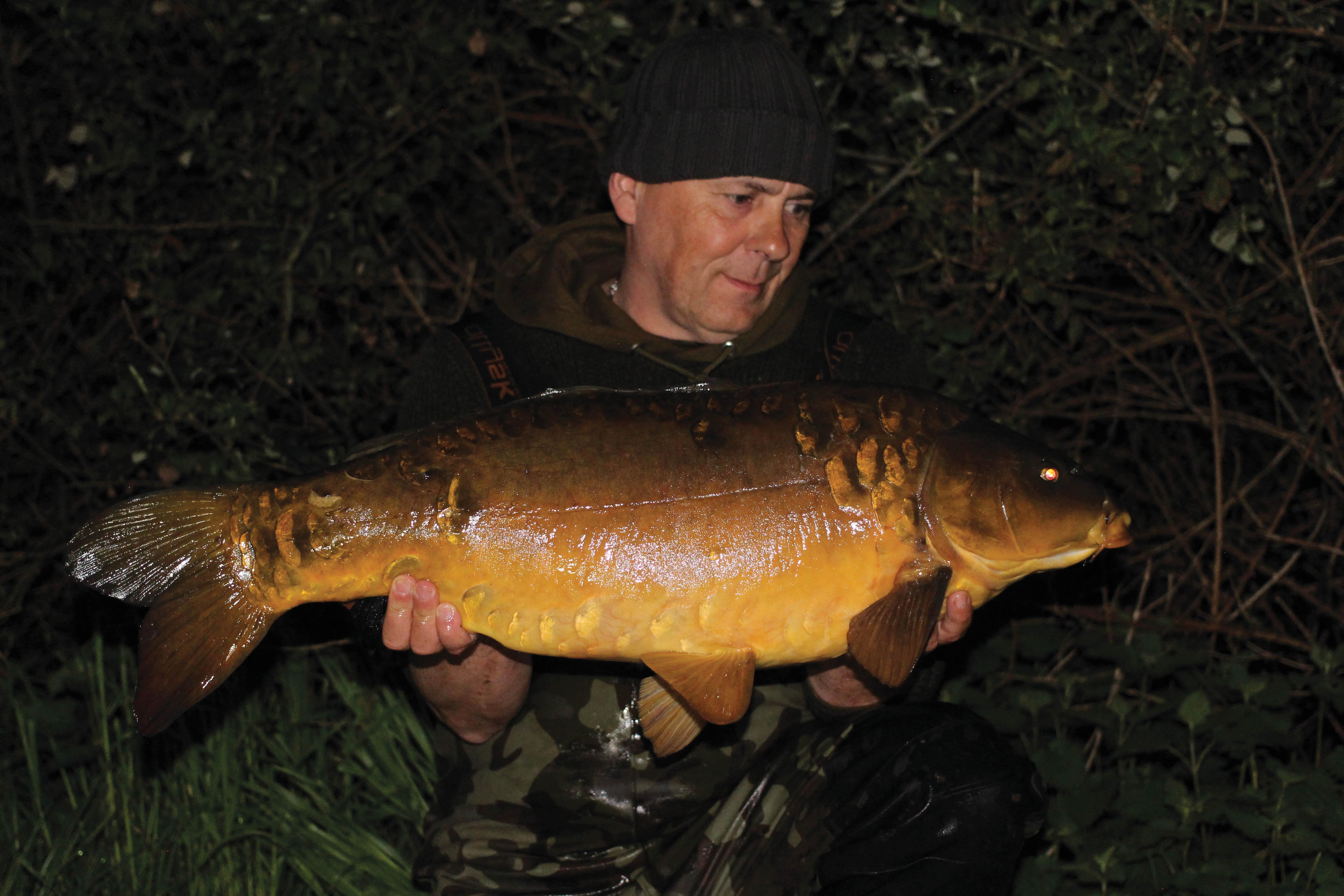
Can you tell us what happened during the night? Did you see anything going into dusk, and did you catch anything during your first night?
“Having seen a common earlier in the day, and fish showing along the bars, I didn’t see anything else as it got dark. I thought I may have made a mistake putting the bait out, but at around 10 o’clock, with the temperature having dropped and as I was about to get ready for bed, the left-hand rod pulled up tight and bent round. The fish, a mirror of 21lb, gave a good scrap and was a nice bonus on the first night, especially after all the walking and looking.”
Going into your second night, following on from your success on the first night, did you introduce more bait, perhaps the same amount or just a smaller top-up?
“After the first fish, all I did was re-cast the rod, in the dark. The lead when down perfectly. I left it for the night and I didn’t put any more bait out. I felt that the fish had found my bait and there may be a few out there, but I had no further action, and dawn was quiet as well. Then the birds moved in. “Later in the day, I reeled all the rods in, put fresh baits on them and repeated the process of the first day. Again, after re-casting, I fed the same number of Spombs with the same mix of whole and crushed boilies, and a bit of sweetcorn, over all three rods.
“Just on dusk, the same rod was away again. After a pretty uneventful fight, I netted a nice mirror of just under 24lb. That was a good start to the night, so I thought I’d do another.”
What have you done ahead of the final night of your session? Have you changed anything, and what are your expectations?
“My expectations tonight are fairly high. I feel as though I might get another one, with bite time appearing to be between dusk and around 10 o’clock. Burt, who was in here before me, had them during the small hours, so we’ll see. We might have one, we might not. The wind’s blowing through the swim, so the fish may be backing away from the shallow water. Once the wind drops during the evening, though, they may well creep back into the shallows. Fingers crossed!”
THE FINAL MORNING
You’ve just completed your final night, and it’s now mid-morning and there have been no further bites. How would you sum up the session, and have you learnt anything in particular that’ll be noteworthy for future sessions?
“After the third, and what was the final night, I’d not seen a fish show during the last 24hrs, so I decided to pack up and head home. There seemed little point in staying any longer, as the fish had clearly moved, and to back that up, a number were caught elsewhere around the lake. I’m not there to camp, so I’d rather use my time more wisely and get fully prepared for next week’s session. I’ll report back next month to tell you have things have progressed…”
Read part one here!
